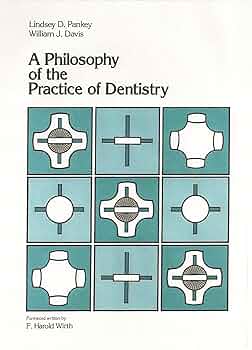Co-Authoring A PHILOSOPHY OF DENTAL PRACTICE—Part One
By Bill Davis, DDS
My academic goal in the early 1980’s was to be promoted to full professor at the Medical College of Ohio in Toledo. The Dean of the College of Medicine where I worked was my patient. We had been able to do a complete restoration for him using the Pankey Mann Schuyler technique, including the Functional Generated Path. Over the eight weeks it took to do his dentistry, he allowed me to take three hours a week out from his very busy schedule. During our time together, he developed a great deal of gratitude and appreciation for the complexities of restorative dentistry. At the end of his treatment, he told me he was about to retire as the Dean. He said he wanted to get me promoted to full professor before he left. go beef up my CV for the promotions committee, he recommended I write ten more scientific articles or a book.
I had no idea what it would take to write a book, but it seemed easier than writing ten more articles. So, off I went to find something to write a book about. The very next week I was at the Pankey Institute, as a visiting faculty member, helping in a C3 class. C3 was the heavy restorative week. The students would equilibrate their models, develop the anterior guidance, do onlay preparations on two opposing quadrants, do wax-ups, and finally cement gold castings.
Once the student had completed posterior mandibular wax-ups, the visiting faculty would spend most of the night casting the wax-ups into gold in the in-house laboratory. The next day the student would seat the mandibular restorations, prepare the maxillary posterior teeth, do the FGP, and wax-up the maxillary preparations using the stone FGP. The nighttime castings were done by the visiting faculty, and I had volunteered to help with the castings.
At that time, Christian Sagar was the executive director of the institute. I told Chris I was looking for a topic to write a book about, maybe something for or about the Institute. He told me he had just hired a professional writer to help Dr. Pankey write his philosophy. I told him if there was anything I could do related to the book project, I would be happy to help. As it turned out, Dr. Pankey liked the writer very much, but he became frustrated because the writer knew nothing about dentistry. For example, the writer asked, “What is a facebow?”. This made communication difficult between them.
It was about a month later when Chris called me and asked if I still wanted to work with Dr. Pankey on his book. I said, “Absolutely.” Again, I had no idea what I was signing myself up to do. The next week, I flew back to the institute for a quick meeting with Chris and Dr. Pankey. We all agreed that I would come down one Tuesday a month and interview Dr. Pankey. I planned to tape all our conversations and then have a local court reporter type them up. I would use the typed transcripts as working documents as we developed the book.
To be continued…
Related Course
Creating Financial Freedom
DATE: March 6 2025 @ 8:00 am - March 8 2025 @ 2:00 pmLocation: The Pankey Institute
CE HOURS: 16
Dentist Tuition: $ 2795
Single Occupancy with Ensuite Private Bath (per night): $ 345
Achieving Financial Freedom is Within Your Reach! Would you like to have less fear, confusion and/or frustration around any aspect of working with money in your life, work, or when…
Learn More>









